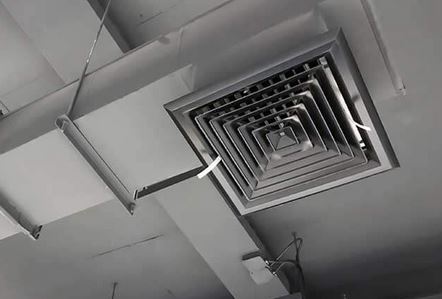Ducts are simply guided passage for air around a building and out of it. These are made out of various materials that facilitate airflow without any loss. As acts as a planned passage for the air to carry out the intended purpose. To install them contractors can benefit from DUCT takeoff services.
Contents
Materials Used to Manufacture Ducts
Certain materials are used to create ducts. These materials hold the ability to provide for a smooth and intact passage. While some are used additional insulation to provide the required effect and some do not.
These materials are:
- Aluminum
- Galvanize Steel
- Fiberglass Duct Board
- Fabric Ducting
- PVC Ducting
- Glass Wool
- Polyester Fiber
These materials come with their benefits and drawbacks. Hence, they are utilized for the concerned system as per the qualities of the required duck work.
Further other components such as damps and insulation are used.
Duct’s Components
Ducts required certain components that facilitate the passage. These are an integral part of the ductwork. These components and their roles are:
- Vibration Isolators
Ducts begin with blowers that create vibration. This vibration is substantial and transfers a strong voice. Vibration isolators eliminate this voice.
- Stack Boots and Heads
For thin walls, stacks are installed. These can fit in tighter places and transport air. Stack boot and stack head are installed to allow transition between regular ducts and stacks.
- Volume Control Dampers
The volume of airflow is important for any ventilation system. Volume control dampers or VCDs facilitate that. This control can be manual or automatic.
- Smoke and Fire Dampers
Like VCD, smoke and fire dampers provide to mean to restrict smoke and fire mobility in the ducts. Just as these dampers detect smoke and fire, the actuator automatically closes the dampers.
- Turning Vanes
Turning vanes facilitate a change of direction at 90 degrees within the ducts. These minimize turbulence and resistance that the duct may face.
- Plenums
These act as the central destruction units for HAVC systems. It carries air from serval vents into the central one. Also, they direct air to the concerned room in the building.
This is how ducts work.
The Uses
Ducts are an important requirement in modern buildings. The most prominent use includes HVAC systems. To install them HVAC estimating services are a great tool.
The primary function of the duct is transporting air. This may be within the building or out of the building. This sole depends upon the nature of the system if it is simply a ventilation system or an HVAC system. A ventilation system simply provides for the harmful air to escape and makes sure that the indoor air stays healthy. While the HVAC system includes an air conditioning unit that blows in the desired quality of air. The air is circulated in the building.
These systems prove beneficial for any type of project concerned. They maintain the air is healthy as possible. In turn, the inhabitants stay healthy and carry out the required tasks. In addition to the quality of air, it provides for the heating concerns with HVAC systems. However, ventilation stays the most basic and most frequent usage of ducts or ductwork.
Conclusion
Ducts are an important construction item. It provides for air passage as its primary function. They are made with various different materials. These vary as per the material’s characteristics. Along with the ducts, a number of other construction materials are used. These include vibration isolators, stack boots, and heads, volume control dampers, smoke and fire dampers, turning vanes, plenums, and others. All of this contributes to provide for ventilation and HVAC systems.
